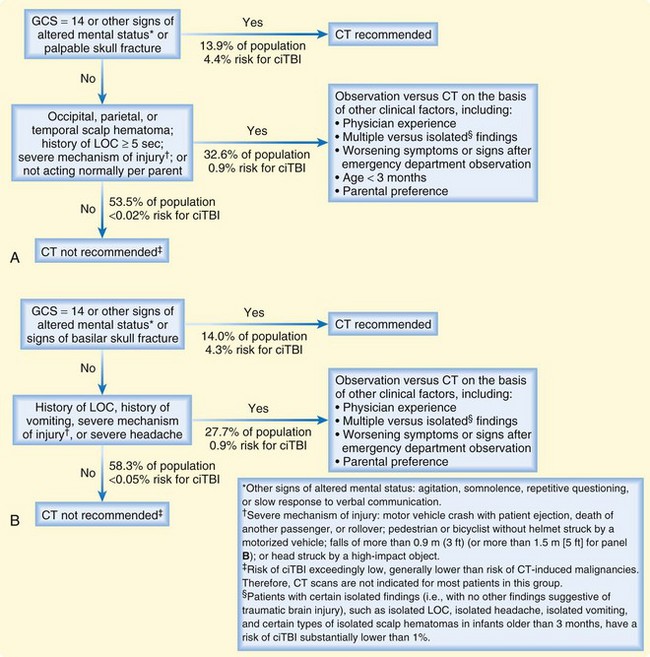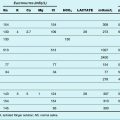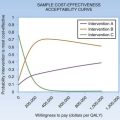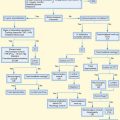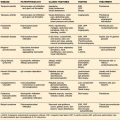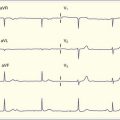14 General Approach to the Pediatric Patient
• Each stage of childhood development brings particular anatomic, physiologic, and developmental features that affect assessment and management.
• The emergency department must have the resources immediately available for stabilization of critically ill children. Written transfer agreements for specialized care are imperative.
• Parents or caregivers must be considered during every interaction with a child, especially if the child is seriously injured or ill. A child’s anxiety and fear often reflect what the child feels or sees in the caregivers.
• Family presence during invasive procedures and resuscitation can be a positive experience for some caregivers, especially those treating children with chronic illnesses.
Acknowledgment and thanks to Dr. Antonio E. Muniz for his work on the first edition.
General Approach
Children account for about 30% of all emergency department (ED) visits; of these, 80% are initially evaluated in a general rather than a pediatric ED.1,2 Therefore, it is imperative that the general ED environment be not only child friendly but also child safe.
Children are triaged according to the same general guidelines as adults:
The pediatric assessment triangle (PAT), which consists of a 15- to 20-second evaluation of the patient’s appearance, mental status, work of breathing, and circulation of the skin, should be performed before the physical examination. The PAT provides a rapid assessment of the child’s oxygenation, ventilation, and perfusion and can help categorize the patient into a triage level. Normal vital signs by age are listed in Table 14.1. The PALS formula for blood pressure is 70 + (2 × age in years). It is important to note that this formula defines the 5th percentile for systolic blood pressure in children. Therefore, the preferred formula is 90 + (2 × age in years) because this is the 50th percentile for blood pressure. In the newborn period, normal systolic blood pressure is 60 mm Hg.
| AGE | RESPIRATORY RATE (BREATHS PER MINUTE) | HEART RATE (BEATS PER MINUTE) |
|---|---|---|
| <1 yr | 30-60 | 100-160 |
| 1-2 yr | 25-40 | 90-150 |
| 2-5 yr | 20-30 | 80-140 |
| 6-12 yr | 18-30 | 70-120 |
| >12 yr | 12-16 | 60-100 |
The following suggestions constitute a general approach to a child in the ED:
• Allow the parent or caregiver to stay with the child whenever possible.
• Ask what name to use for the child, and then address the child by name.
• Use nonmedical terminology when talking with the family, especially when discussing planned interventions, findings, and treatments. Use language that children will comprehend.
• Always provide privacy no matter how young the child.
• Observe the patient’s level of consciousness, activity level, interaction with the environment and caregiver, position of comfort, skin color, respiratory rate and effort, and level of discomfort before touching the child. Compare the findings on evaluation with the parents’ or caregivers’ description of the child’s normal behavior, such as eating and sleeping habits, activity level, and level of consciousness.
• Be honest with the child and parent or caregiver. Parents or caregivers require reassurance about and explanations of the situation and the anticipated plan of treatment.
• Acknowledge and compliment good behavior, and encourage and praise the child. Provide rewards such as stickers or books.
• Allow the child to make simple age-appropriate choices and to participate in the treatment plan. For example, ask the child which arm to use for measuring blood pressure.
• Encourage play during the examination and any procedures. Use diversion and distraction techniques, such as encouraging the child to blow bubbles and blow the hurt away. Ask the child to sing a favorite song, and sing along or have the parents or caregivers do so. Have the child picture a favorite place and describe it in detail with all five senses.
• Give the child permission to voice any feelings. Tell the child that it is okay to cry. Sympathy is essential.
• Assess for pain with age-appropriate assessment tools. Elicit from the parents or caregivers the child’s typical response to pain.
• Be cautious about what you say in the presence of an awake or presumed unconscious child.
Growth and Development
Although growth and development occur simultaneously, they are discrete and separate processes. Growth refers to an increase in the number of cells and leads to an increase in physical size. Development is the gradual and successive increase in ability or performance skills along a predetermined path, often referred to as developmental milestones or tasks (Table 14.2). Development is predominantly age specific and reflects neurologic, emotional, and social maturation. Although there is cross-cultural similarity in the sequence and timing of developmental milestones, cultures exert an all-pervasive influence on developing children.
Prone: Legs are more extended; child holds chin up, turns head; head is lifted momentarily to plane of body on ventral suspension
Supine: Tonic neck posture predominates; is supple and relaxed, head lags on lifting to sitting position, has tight grasp
Visual: Follows moving object or person, watches a person
Social: Body movements in cadence with voice, smiles responsively, becomes alert in response to voice
Prone: Lifts head and chest in vertical axis with legs extended, rolls front to back
Supine: Symmetric posture predominates, hands in midline, reaches and grasps objects and brings them to mouth
Sitting: No head lag on pulling to sitting position, head steady, enjoys sitting with full truncal support, tracks objects through 180-degree horizontal arc
Standing: When held erect, pushes with feet
Adaptive: When held erect, pushes with feet
Social: Laughs out loud, may show displeasure if social contact is broken, is excited at sight of food, waves at toys
Supine: Lifts head, rolls over, makes squirming motions
Sitting: Sits unsupported but falls on hands, back is rounded
Standing: May support most of weight, bounces actively
Adaptive: Resists pull of a toy, reaches out for and grabs large objects, transfers object from hand to hand, grasps with radial palm, rakes at a pellet
Motor: Helps hold bottle during feeding
Language: Babbles, giggles, or laughs when tickled
Social: Responds more to emotions, enjoys looking at a mirror, responds to changes in emotional content, turns to a voice, clicks tongue to gain notice
Sitting: Sits up alone with no support
Standing: Pulls to standing position
Adaptive: Grasps objects with thumb and forefinger, pokes at things with forefinger, picks up a pellet with assisted pincer movement, uncovers a hidden toy, attempts to retrieve a dropped object, releases object to other person
Motor: Crawls or creeps, walks holding onto furniture
Language: Makes repetitive sounds such as “mama” and “dada”; imitates speech
Social: Plays pat-a-cake or peek-a-boo, waves bye-bye, tries to find hidden objects, responds to name, begins to respond to “no” and to one-step commands
Motor: Walks with one hand held, walks holding onto furniture, takes several steps; drinks from cup with help
Adaptive: Picks up a pellet with unassisted pincer movement of forefinger and thumb, releases a held object to other person on request or gesture, points to desired objects, tries to build tower of 2 cubes
Language: Has 3 simple words, understands approximately 10 words
Social: Plays simple games, makes postural adjustment to dressing, follows simple commands
Motor: Walks up and down stairs with one hand held, jumps and runs well, stands on either foot alone for 1 second, climbs on furniture, kicks and throws ball
Adaptive: Handles spoon well, is able to turn doorknob, makes circular scribbling, imitates horizontal stroke, folds paper once imitatively, can build tower of 6 to 7 cubes, points to named objects or pictures
Language: Puts 3 words together, uses pronouns
Social: Listens to stories with pictures, turns pages of book, observes pictures, helps undress self, often tells immediate experiences, verbalizes toilet needs
Motor: Goes up stairs while alternating feet, rides tricycle, stands momentarily on one foot
Adaptive: Can construct block tower of more than 9 cubes, makes vertical and horizontal strokes on paper but does not join them to make a cross, copies a circle, holds crayon with fingers
Language: Composes sentences of 3 to 4 words, has vocabulary of 900 words
Social: Knows own age and sex, counts 3 objects, knows first and last names, plays simple games, helps in dressing self, washes hands
Motor: Hops on one foot, throws ball overhead, uses scissors to cut out pictures, climbs well, runs and turns without losing balance, stands on one leg for at least 10 seconds, catches bounced ball
Adaptive: Copies cross and square, draws people with 2 to 4 parts besides head, knows days of week
Language: Counts 4 pennies, tells a story, learns and sings simple songs, has vocabulary of more than 1500 words, easily composes sentences of 4 to 5 words, can use past tense, knows days of week, can ask up to 500 questions a day
Social: Plays with several children with beginning of social interaction and role-playing, goes to toilet alone
Motor: Skips smoothly, can catch ball
Adaptive: Draws triangle from copy, names heavier of 2 weights, knows right and left hand, draws person with at least 8 details
Language: Names 4 colors, repeats sentences of 10 syllables, has vocabulary of more than 2100 words, counts 10 pennies, prints first name, tells age
Social: Dresses and undresses, asks questions about meanings of words, engages in domestic role-playing
The Family
The parents and other significant caregivers play a fundamental role in the child’s health care experience.3 Communicating effectively with the parents or caregivers is critical in obtaining an accurate history and consent for treatment.3 When the child suffers from pain because of illness or injury, the parents or caregivers experience almost equal anxiety and emotional stress. The parent’s or caregiver’s reaction to the child’s condition will directly affect not only how the child behaves but also the manner in which the medical team approaches the patient.
Innate parental or caregiver instincts may evoke powerful emotional reactions. Such reactions are affected by guilt, fear, anxiety, disbelief, shock, anger, and loss of control.3 Abandoning a child to a stranger’s care, not understanding what will occur next, and worrying about a child’s condition leave caregivers feeling defenseless. Fear of the unknown, fear of separation, fear of the possibility of significant morbidity or death, and fear of a strange environment may add stress to the parents’ or caregivers’ attitudes about the illness or injury in their child. Parents’ or caregivers’ own anxiety and response to the event may negatively influence the ability to console the child, to understand information communicated by health care providers, to participate in decision making for the child’s care, and to recall discharge instructions.3
Family Presence
Evidence now suggests that presence of the child’s family during invasive procedures and resuscitation can be positive, especially in children with chronic illnesses.4 Although many family members and health care providers support the concept of family presence, parents or caregivers are not frequently given the option to remain with the child during invasive procedures.5 Many providers are concerned that family presence will impede care of the child, that it will be distracting to members of the team providing care, and that it will increase stress in the team.5,6 Contrary to this belief, studies have shown that family members do not interfere with health care providers and that the family benefits in a variety of ways from the experience.7–10 There is also evidence that children feel less stress when parents or caregivers are allowed to remain during procedures.11 In addition, when institutions have incorporated family presence into their practice, staff members have remained supportive.12 Family members who were present for procedures reported that they would do so again and that their grieving behavior was positively affected by the experience.4
The choice to remain present during invasive or resuscitation procedures must be made by the parent or caregiver.13,14 If the parent or caregiver prefers to not stay with the child, ED personnel must respect that decision and continue to provide appropriate support and explanations.14 If the parent or caregiver chooses to stay with the child, the health care team must ensure that this person is given a clear explanation of the procedure and expected responses.
1 Wiebe R. General approach to the pediatric emergency patient. In: Wolfson AI, ed. Harwood Nuss’ clinical practice of emergency medicine. 5th ed. Philadelphia: Lippincott Williams & Wilkins; 2010:1059.
2 Weiss HB, Mathers LJ, Farjuoh SN, et al. Child and adolescent emergency department datebook. Pittsburgh: Center for Violence and Injury Control, Allegheny University of the Health Sciences; 1997.
3 Horowitz L, Kassam-Adams N, Bregstein J. Mental health aspects of emergency medical services for children: summary of a consensus conference. Acad Emerg Med. 2001;8:1187–1196.
4 Henderson DP, Knapp J. Report of the National Consensus Conference on Family Presence during Pediatric Cardiopulmonary Resuscitation and Procedures. Pediatr Emerg Med. 2005;21:789–791.
5 MacLean SL, Guzzetta CE, White C, et al. Family presence during cardiopulmonary resuscitation and invasive procedures: practice of critical care and emergency nurses. J Emerg Nurs. 2003;29:208–221.
6 Dingeman RS, Mitchell EA, Meyer EC, et al. Parent presence during complex invasive procedures and cardiopulmonary resuscitation: a systematic review of the literature. Pediatrics. 2007;120:842–854.
7 Williams JM. Family presence during resuscitation: to see or not to see? Nurs Clin North Am. 2002;37:211–220.
8 Sacchetti A, Carraccio C, Leva E, et al. Acceptance of family member presence during pediatric resuscitations in the emergency department: effects of personal experience. Pediatr Emerg Care. 2000;16:85–87.
9 Dudley NC, Hansen KW, Furnival RA, et al. The effect of family presence on the efficiency of pediatric trauma resuscitations. Ann Emerg Med. 2009;53:777–784. e3
10 Boie ET, Moore GP, Brummett C, et al. Do parents want to be present during invasive procedures performed on their children in the emergency department? A survey of 400 parents. Ann Emerg Med. 1999;34:70–74.
11 Wolfram RW, Turner ED, Philput C. Effects of parental presence during young children’s venipunctures. Pediatr Emerg Care. 1997;13:325–328.
12 Eppich WJ, Arnold LD. Family member presence in the pediatric emergency department. Curr Opin Pediatr. 2003;15:294–298.
13 Boudreaux ED, Francis JL, Layacano T. Family presence during invasive procedures and resuscitations in the emergency department: a critical review and suggestions for future research. Ann Emerg Med. 2002;40:193–205.
14 Eichhorn DJ, Meyers TA, Guzzetta CE, et al. During invasive procedures and resuscitation: hearing the voice of the patient. Am J Nurs. 2001;101:48–55.

